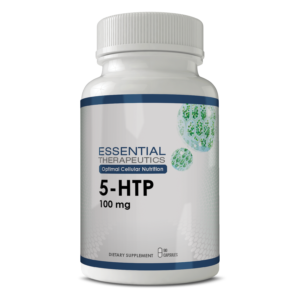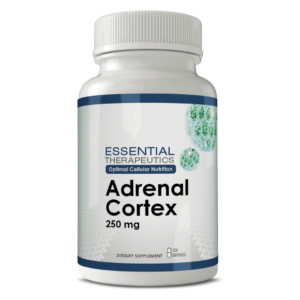Fibromyalgia
“We understand.”
 For most of the world, it’s a common little phrase. But for people who have fibromyalgia or chronic fatigue syndrome (or both), it’s amazingly powerful, not to mention rare. Because you have an illness that’s hard to “prove,” loved ones may secretly convict you of hypochondria or laziness. You may be told “it’s all in your head.” You may be urged to exercise or lose weight or take antidepressants.
For most of the world, it’s a common little phrase. But for people who have fibromyalgia or chronic fatigue syndrome (or both), it’s amazingly powerful, not to mention rare. Because you have an illness that’s hard to “prove,” loved ones may secretly convict you of hypochondria or laziness. You may be told “it’s all in your head.” You may be urged to exercise or lose weight or take antidepressants.
Physicians can be even worse. If they believe the conditions exist at all—and some don’t—their first impulse is to mask the symptoms with prescription drugs. Patients often end up on a medical merry-go-round, seeing doctor after doctor after doctor. They end up more confused and disoriented than ever, often concluding, “Maybe I am crazy, after all.”
But take heart. Here at my office, we know what you’re going through. We specialize in treating fibromyalgia and CFS. We don’t offer one-size-fits-all solutions, because every case is different. We take an integrated approach to treatment that combines the best of traditional and alternative medicine. Our goal is to get to the root of the problem, to help the body’s innate healing ability return to normal.
Note: Scroll down to bottom of page to see links to information and past newsletters about Fibromyalgia and CFS
About Fibromyalgia Syndrome
Fibromyalgia syndrome (FMS) is an illness characterized by diffuse muscle pain, poor sleep, and unrelenting fatigue. Individuals with fibromyalgia may also experience headaches, anxiety, depression, poor memory, numbness and tingling in the extremities, cold hands and feet, irritable bowel syndrome, lowered immune function, and chemical sensitivities. Over 10 million Americans suffer with fibromyalgia; ninety percent of them are women between 25 and 45 years old.
Diagnostic tests are currently unavailable to confirm fibromyalgia. The diagnosis is usually reached after ruling out other conditions including neurological, autoimmune, endocrine, musculoskeletal, immunological, and mental disorders. Patients have typically had the illness at least 7 years and have been seen by a dozen different doctors before they’re diagnosed with fibromyalgia.
In 1990 The American College of Rheumatology (ACR) first proposed the current criteria for defining fibromyalgia syndrome. The criteria include a history of widespread pain lasting more than 3 months and the presence of at least 11, out of a possible 18, tender points. Pain is considered to be widespread when it affects all four quadrants of the body; that is, you must have pain in both your right and left sides as well as above and below the waist to be diagnosed with fibromyalgia.
The American College of Rheumatology first proposed the current criteria for defining FMS. The diagnosis requires that all three of the major criteria, and four or more of the minor criteria, be present:
Major Criteria:
1. Generalized aches or stiffness of at least three anatomical sites for at least three months
2. Six or more typical, reproducible tender points
3. Exclusion of other disorders that can cause similar symptoms
Minor Criteria:
1. Generalized fatigue
2. Chronic headache
3. Sleep disturbance
4. Neurological and psychological complaints
5. Numbing or tingling sensations
6. Irritable bowel syndrome
7. Variation of symptoms in relation to activity, stress, and weather changes
8. Depression
It’s reported that only 2% of the population meet all he criteria of the American College of Rheumatology. This estimate is much too low. There are some problems with the ACR criteria. The biggest being many individuals with FMS meet some of the criteria but not all of it. Most of these individuals have other symptoms associated with FMS not explicitly outlined in the ACR criteria. They may have insomnia, irritable bowel, fatigue, mental confusion, and only 4 of the 18 trigger points. Or they may have insomnia, fatigue and 5 reproducible tender points. Although the minor criteria represent the most frequent and usual symptoms associated with FMS, it doesn’t account for all of the various conditions seen in FMS patients.
The following is a more detailed list of potential symptoms that patients may experience:
Sleep disturbances: Sufferers may not feel refreshed, despite getting adequate amounts of sleep. They may also have difficulty falling asleep or staying asleep.
Stiffness: Body stiffness is present in most patients. Weather changes and remaining in one position for a long period of time contributes to the problem. Stiffness may also be present upon awakening.
Headaches and facial pain: Headaches may be caused by associated tenderness in the neck and shoulder area or soft tissue around the temporomandibular joint (TMJ).
Abdominal discomfort: Irritable bowel syndrome including such symptoms as digestive disturbances, abdominal pain and bloating, constipation, and diarrhea may be present.
Irritable Bladder: An increase in urinary frequency and a greater urgency to urinate may be present.
Numbness or tingling: Known as parathesia, symptoms include a prickling or burning sensation in the extremities.
Chest Pain: Muscular pain at the point where the ribs meet the chest bone may occur.
Cognitive Disorders: The symptoms of cognitive disorders may vary from day to day. They can include “spaciness,” memory lapses, difficulty concentrating, word mix-ups when speaking or writing, and clumsiness.
Environmental Sensitivity: Sensitivities to light noise, odors, and weather are often present, as are allergic reactions to a variety of substances.
Disequilibrium: Difficulties in orientation may occur when standing, driving, or reading. Dizziness and balance problems may also be present.
What Causes Fibromyalgia? Research suggests fibromyalgia may be the result of:
• Trauma, especially whiplash injuries.
• Hypothalamus-pituitary-adrenal axis (HPA) dysfunction.
• Emotional/physical/mental stress.
• Low thyroid function.
• Low serotonin states.
• Adrenal dysfunction.
• Chronic viral, mycoplasma, and or bacterial infections.
• Endocrine disorders.
• Sleep disorders.
The truth is we really don’t know for sure what causes fibromyalgia.
What We Do Know
Fibromyalgia is now thought to arise from a miscommunication between the nerve impulses of the central nervous system. The neurons, which supply the brain, become more excitable, exaggerating the pain sensation. This over-amplification of pain is referred to as “central sensitization.” Fibromyalgia patients have a reduction in their pain threshold (allodynia),brainblue an increased response to painful stimuli (hyperalgesia) and an increase in the duration of pain after nociceptor stimulation (persistent pain). Individuals with fibromyalgia syndrome have low levels of serotonin, a 4-fold increase in nerve growth factor, and elevated levels of substance P. Nerve growth factor (NGF) is a member of a family of peptides known as the neurotrophins. The exposure of nociceptive sensory neurons to NGF leads to up-regulation of substance P in sensory neurons. Substance P, the neuropeptide in spinal fluid, is a neurotransmitter that is released when axons are stimulated. Increased levels of substance P increase the sensitivity of nerves to pain or heighten awareness of pain. Although it’s not fully understood, fibromyalgia patients have an imbalance of the hypothalamus-pituitary-adrenal (HPA) axis. This imbalance creates hormonal inconsistencies, which disrupt the body’s ability to maintain homeostasis.
Many of the most common fibromyalgia symptoms including widespread muscle pain, fatigue, poor sleep, gastrointestinal problems, and depression regularly occur in people with various neuroendocrine disorders, including those manifested by HPA dysfunction. Researchers believe suppression of the HPA (quite likely from chronic stress), which results in lowering human growth hormone (HGH), dehydroepiandrosterone (DHEA), cortisol, and other hormones, is aggravated by the chronic pain and poor sleep associated with fibromyalgia.
Hypothalamus-Pituitary-Adrenal Axis (HPA) Dysfunction
The main function of the hypothalamus is homeostasis, or maintaining the body’s status quo. The hypothalamus receives and transmits messages from the nervous system and hormonally through the circulatory system. Because of its broad sphere of influence, the hypothalamus could be considered the body’s master computer. The hypothalamus receives continuous input about the state of the body and must be able to initiate compensatory changes if anything drifts out of line.
The Hypothalamus regulates such bodily functions as:
1. Blood pressure – is often low in those with fibromyalgia.
2. Digestion – bloating, gas, indigestion, and reflux are common in FMS patients.
4. Circadian rhythms (sleep/wake cycle) – which is consistently disrupted in FMS.
6. Sex drive – loss of libido is a common complaint for FMS patients.
7. Body temperature – is often low in FMS patients.
8. Balance and coordination- FMS patients have balance and coordination problems.
9. Heart rate – mitral valve prolapse (MVP) and heart arrhythmias are a common finding in FMS patients.
10. Sweating – it’s not unusual for FMS patients to experience excessive sweating.
11. Adrenal hormones – are consistently low in FMS patients.
12. Thyroid hormones and metabolism-hypothyroid is a common finding in FMS patients.
Recent studies show that over 43% of FMS patients have low thyroid function. It’s estimated that those with FMS are 10 to 250,000 times more likely to suffer from thyroid dysfunction.
A Vicious Cycle1. Chronic stress disrupts HPA homeostasis, leading to allodynia.
2. Chronic pain disrupts the circadian rhythm.
3. Dysfunction in the circadian rhythm results in poor sleep.
4. Poor sleep reduces growth hormone production, leading to poor repair of damaged muscle fibers, poor memory, fatigue, suppressed immune function, and more pain.
5. Increased pain further disrupts sleep and leads to depletion of stress coping chemicals including serotonin.
6. A reduction in serotonin causes an increase in the neurotransmitter, substance P.
Substance P enhances pain receptors, creating even more pain.
7. Poor sleep and ongoing stress lead to fatigue, mood disorders, IBS and may cause thyroid
dysfunction.
8. Chronic stress contributes to adrenal fatigue, decreased DHEA, and lowered resistance to stress. Decreased stress coping abilities then lead to lowered immune function.
9. Lowered blood volume from adrenal dysfunction (and resultant hypo-tension) leads to further fatigue.cellphonestresssm
Stress and Fibromyalgia
A survey by The Fibromyalgia Network reports that 62% of their respondents list physical or emotional stress as the initiating factor in their acquiring fibromyalgia. I believe chronic stress is the underlying catalyst for the onset of HPA dysfunction and fibromyalgia. Several studies have demonstrated how chronic stress undermines the normal hypothalamic-pituitary-adrenal axis (HPA) function.
The Importance of a Good Night’s Sleep
Studies have shown that individuals who were prevented from going into deep sleep for a period of a week develop the same symptoms associated with FMS and CFS; diffuse pain, fatigue, depression, anxiety, irritability, stomach disturbances, and headaches. Sleep deprivation markedly increases inflammatory cytokines (pain causing chemicals)—by a whopping 40%.
Therefore, restoring deep restorative sleep is one of the most important steps in beating fibromyalgia, if not the most important step of all.
Serotonin
Serotonin helps regulate sleep, digestion, pain, mood, and mental clarity. Serotonin helps:
1. Raise the pain threshold (have less pain), by blocking substance P.
2. You fall asleep and stay asleep through the night.
3. Regulate moods. “The happy hormone” reduces anxiety and reduces depression.
4. Reduce sugar cravings and over-eating.
5. Increase a person’s mental abilities.
6. Regulate normal gut motility (transportation of food-stuff) and reverse irritable bowel syndrome (IBS).
Surveys have shown that as many as 73% of FMS patients have irritable bowel syndrome. You have more serotonin receptors in your intestinal tract than you do in your brain. Emotionally stressful situations cause the body to release adrenaline, cortisol and insulin. These stress hormones stimulate the brain to secrete serotonin. Long term stress and poor dietary habits can deplete the body’s serotonin stores.
Tryptophan, 5 Hydroxytryptophan (5HTP) and Serotonin
Tryptophan is one of eight essential amino acids. Tryptophan is absorbed from the gut into the bloodstream and then dispersed throughout the body. Ninety percent of tryptophan is used for protein synthesis, one percent is converted to serotonin, and the balance is used to make niacin. In the formation of serotonin, tryptophan is hydroxylated to 5-hydroxy-tryptophan (5HTP) by tryptophan hydroxylase. 5HTP is converted to serotonin by the decarboxylase enzyme, which is vitamin B6 dependent. Tryptophan is transported across the blood-brain barrier via a transport molecule, which also carries leucine, isoleucine, and valine, and prefers leucine. However, 5HTP easily crosses the blood-brain barrier and does not utilize this transport mechanism; thus, it does not compete for passage through the blood-brain barrier with these amino acids. And, unlike tryptophan, which is made from bacterial fermentation (and hence subject to contamination), 5HTP is derived from the West African plant Grifonia simplicifolia. In the body, 5HTP is converted directly in to serotonin. It is not broken down by tryptophan pyrrolase, and does not have to compete for transport across the blood-brain barrier. Individuals with fibromyalgia have low levels of tryptophan, serotonin, and 5-HTP. Studies show that fibromyalgia patients have higher levels of metabolites in the kynurenine pathway, which diverts tryptophan away from serotonin production.
Selective Serotonin Reuptake Inhibitor (SSRI) Medications
 Prescription antidepressants can be helpful. However, antidepressant drugs have potential side effects including anxiety, depression, fatigue, decreased sex drive, and disruption of normal circadian rhythms. SSRI’s are supposed to help a patient hang onto and use their naturally occurring stores of the brain chemical serotonin. It’s like using a gasoline additive to help increase the efficiency of your cars fuel. Most of the patients I see with fibromyalgia are running on fumes and a gasoline additive won’t help. Please keep in mind that several studies show that between 19-70% of those taking antidepressant medications do just as well by taking a placebo or sugar pill. I recommend my patients boost their serotonin levels by taking 5HTP.
Prescription antidepressants can be helpful. However, antidepressant drugs have potential side effects including anxiety, depression, fatigue, decreased sex drive, and disruption of normal circadian rhythms. SSRI’s are supposed to help a patient hang onto and use their naturally occurring stores of the brain chemical serotonin. It’s like using a gasoline additive to help increase the efficiency of your cars fuel. Most of the patients I see with fibromyalgia are running on fumes and a gasoline additive won’t help. Please keep in mind that several studies show that between 19-70% of those taking antidepressant medications do just as well by taking a placebo or sugar pill. I recommend my patients boost their serotonin levels by taking 5HTP.
5HTP and Depression
Studies (including double-blind) comparing SSRI and tricyclic antidepressants to 5HTP have consistently shown that 5HTP is as good if not better than prescription medications in treating mood disorders. Furthermore, 5HTP doesn’t have some of the more troubling side effects associated with prescription medications.
5HTP and Sleep
5HTP has been shown to be beneficial in treating insomnia, especially in improving sleep quality by increasing REM sleep and increasing the body’s production of melatonin by 200%.
 5HTP and Fibromyalgia
5HTP and Fibromyalgia
Double-blind, placebo-controlled trials have shown that patients with FMS were able to see the following benefits from taking 5HTP:
• decreased pain.
• improved sleep.
• less tender points.
• less morning stiffness.
• less anxiety.
• improved moods in general, including in those with clinical depression.
• increased energy.
Irritable Bowel Syndrome, 5HTP, and Serotonin
There are more serotonin receptors in the intestinal tract than there are in the brain. This is one reason people get butterflies in their stomach when they get nervous. The brain and gut are connected through the neuroreceptors 5-hydroxytriptamine-3 (5-HT3) and 5-hydroxytriptamine-4 (5-HT4). These serotonin receptors regulate the perception of visceral pain and the gastrointestinal (GI) motility. Serotonin controls how fast or how slow food moves through the intestinal tract. It’s common for the symptoms associated with IBS, diarrhea and constipation, to disappear within 1–2 weeks once serotonin levels are normalized with 5HTP replacement therapy.
Restoring Normal Adrenal Function
Adrenal Fatigue
The adrenals are a pair of pea-sized glands located atop each kidney. The adrenal gland consists of two sections: the medulla (inner portion) and the cortex (outer portion). The adrenal glands release certain hormones that allow us to be able to deal with immediate and long-term stress. These glands, and the hormones they release, allow us to be resilient to day-to-day stress.
Under-active adrenal glands are evident in about two-thirds of CFS patients. The majority of patients I see for chronic illnesses, including FMS and CFS, are suffering from it. They have literally burned their stress-coping organ out. Amid years of poor sleep, unrelenting fatigue, chronic pain, excessive stimulants, poor diet, and relying on a plethora of prescription medications, the adrenal glands and the hormones they release have been used up. Once adrenal exhaustion sets in, it’s not long before the body begins to break down. Getting “stressed out” and staying “stressed out” is the beginning of chronic illness for most, if not all, of the FMS and CFS patients I evaluate.
An altered or dysfunctional cortisol control system may be THE cause of FMS/CFS.
We do know that adrenal fatigue is known to cause many of the same problems associated with CFS and FMS:
• hypoglycemia (low blood sugar)
• hypo-tension(low blood pressure)
• neural mediated hypo-tension (become dizzy when stand up)
• fatigue
• decreased mental acuity
• low body temperature (a sign of low thyroid function)
• decreased metabolism
• a compromised immune system
• decreased sense of well-being (depression)
• weight loss
• hyper-pigmentation (excess skin color changes)
• loss of scalp hair
• excess facial or body hair
• vitiligo (changes in skin color)
• auricular calcification (little calcium deposits in the ear lobe)
• GI disturbances
• nausea
• vomiting
• constipation
• abdominal pain
• diarrhea
• crave salty foods
• muscle or joint pains
Individuals with FMS and CFS who suffer from adrenal fatigue (99%) will find that their stress-coping abilities are shot. They don’t handle stress very well. They will try to avoid stressful situations. Stress will make their symptoms worse and cause them to have flare-ups. If they have a day when they feel good they may over do it (clean the house, paint the playroom, grocery shopping, etc.). Then, they usually crash the next day.
Therefore, restoring proper adrenal function is a crucial step in peeling away the layers of dysfunction associated with FMS and CFS. I believe that adrenal fatigue is a major contributory factor to the symptoms associated with FMS and CFS.
The Cortex
 The adrenal cortex is primarily associated with response to chronic stress (infections, prolonged exertion, prolonged mental, emotional, chemical, or physical stress). The hormones of the cortex are steroids. The main steroid is cortisol. Chronic over secretion of cortisol leads to adrenal exhaustion, which accelerates the downward spiral towards chronic poor health. Once in adrenal exhaustion your body can’t release enough cortisol to keep up with the daily demands. Eventually you become deficient in cortisol and then DHEA.
The adrenal cortex is primarily associated with response to chronic stress (infections, prolonged exertion, prolonged mental, emotional, chemical, or physical stress). The hormones of the cortex are steroids. The main steroid is cortisol. Chronic over secretion of cortisol leads to adrenal exhaustion, which accelerates the downward spiral towards chronic poor health. Once in adrenal exhaustion your body can’t release enough cortisol to keep up with the daily demands. Eventually you become deficient in cortisol and then DHEA.
Chronic headaches, nausea, allergies, nagging injuries, fatigue, dizziness, hypo-tension, low body temperature, depression, low sex drive, chronic infections, and cold hands and feet are just some of the symptoms that occur with adrenal cortex exhaustion.
Not Enough DHEA
The adrenal cortex, when healthy, produces adequate levels of dehydroepiandrosterone (DHEA). DHEA boosts:
• energy
• sex drive
• resistance to stress
• self-defense mechanisms (immune system)
• general well-being, and helps to raise:
• cortisol levels
• overall adrenal function
• mood
• cellular energy
• mental acuity
• muscle strength
• stamina
DHEA and immune function
The decrease in DHEA levels correlates with the general decline of cell-mediated immunity and increased incidence of cancer. DHEA protects the thymus gland, a major player in immune function. My fibromyalgia patient’s usually take a special adrenal cortex glandular supplement DHEA is notoriously low in FMS and CFS patients. Chronic stress initially causes the adrenals to release extra cortisol. Continuous stress raises cortisol to abnormally high levels. Then, the adrenal glands get to where they can’t keep up with the demand for more cortisol. As the cortisol levels continue to become depleted from on-going stress, the body attempts to counter this by releasing more DHEA. Eventually they can’t produce enough cortisol or DHEA. Aging makes holding on to DHEA even tougher. Even in healthy individuals, DHEA levels begin to drop after the age of 30. By age 70, they are at about 20% of their peak levels.
Stress and DHEA
DHEA helps prevent the destruction of tryptophan (5HTP), which increases the production of serotonin. This helps provide added protection from chronic stress. Studies continue to show low DHEA to be a biological indicator of stress, aging, and age-related diseases including neurosis, depression, peptic ulcer, IBS, and others.
Digestive Enzymes
 Most individuals with fibromyalgia will complain of bloating, gas, and indigestion. Many of these folks will be placed on acid blocking prescription drugs for heartburn or reflux. However, these drugs can cause nutritional deficiencies since they prevent the absorption of certain essential vitamins and minerals. This may lead to symptoms of fatigue, increased pain, anxiety, and depression.
Most individuals with fibromyalgia will complain of bloating, gas, and indigestion. Many of these folks will be placed on acid blocking prescription drugs for heartburn or reflux. However, these drugs can cause nutritional deficiencies since they prevent the absorption of certain essential vitamins and minerals. This may lead to symptoms of fatigue, increased pain, anxiety, and depression.
Most digestion and absorption takes place in the small intestine and is regulated by pancreatic enzymes and bile. The pancreas aids in digestion by releasing proteolytic enzymes, which help break down proteins into amino acids. It’s these amino acids which make the brain chemicals including serotonin, dopamine, and epinephrine.
These enzymes break down food-stuff and allow the smaller molecules and nutrients to be absorbed into the bloodstream. The enzymes may become deficient for a variety of reasons, including advancing age, excess sugar, deficient essential fatty acids, excessive trans-fatty acids, and overeating. Eating processed food also depletes normal pancreatic enzymes.
I also recommend that all of my fibromyalgia patients take a digestive enzyme with each meal.
Vitamin and Mineral Supplements
Dr. Janet Travell, White House physician for Presidents John F. Kennedy and Lyndon B. Johnson, and Professor Emeritus of Internal Medicine at George Washington University cowrote Myofascial Pain and Dysfunction: The Trigger Point Manual, which is acknowledged as the authoritative work on muscle pain.
In one chapter alone, Dr. Travell and co-author, Dr. David Simons, referenced 317 studies showing that problems such as hormonal, vitamin, and mineral deficiencies can contribute to muscle pain and soreness.
 There are numerous studies which show that individuals with fibromyalgia benefit from taking certain vitamins, minerals and fatty acids. The mineral magnesium, which acts as a natural muscle relaxant, is especially helpful in relieving many of the symptoms associated with fibromyalgia. Malic acid, derived from apples, has been shown to reduce the chronic pain associated with fibromyalgia. Vitamins B6, B3, and B2 are needed to make the brain chemicals, including serotonin. Essential fatty acids (EFAs) help reduce inflammation, boost mood, and optimize the immune system. I’ve developed a special vitamin/mineral formula for my fibromyalgia patients. I have a special “jumpstart” package which contains the Fibromyalgia/Chronic Fatigue Formula, the Adrenal Cortex Formula, the Digestive Enzymes, and the 5HTP formula. These are the nutritional supplements that I recommend for 98% of the patients I see with FMS and CFS, all in one money saving package.
There are numerous studies which show that individuals with fibromyalgia benefit from taking certain vitamins, minerals and fatty acids. The mineral magnesium, which acts as a natural muscle relaxant, is especially helpful in relieving many of the symptoms associated with fibromyalgia. Malic acid, derived from apples, has been shown to reduce the chronic pain associated with fibromyalgia. Vitamins B6, B3, and B2 are needed to make the brain chemicals, including serotonin. Essential fatty acids (EFAs) help reduce inflammation, boost mood, and optimize the immune system. I’ve developed a special vitamin/mineral formula for my fibromyalgia patients. I have a special “jumpstart” package which contains the Fibromyalgia/Chronic Fatigue Formula, the Adrenal Cortex Formula, the Digestive Enzymes, and the 5HTP formula. These are the nutritional supplements that I recommend for 98% of the patients I see with FMS and CFS, all in one money saving package.
For more information about my protocols please read my books, Treating and Beating Fibromyalgia and Chronic Fatigue Syndrome, and The Patient’s Self-Help Manual for Beating Fibromyalgia and CFS. I have a SUPER JUMPSTART PACKAGE that includes everything in the regular jumpstart package (FMS/CFS formula, Adrenal Cortex Formula, Digestive Enzymes, and 5HTP, PLUS both of the books I just mentioned containing over 500 pages of my protocols and information on treating and beating FMS and CFS – and, for a short time only, I’m adding my one hour cassette tape for free.
Traditional Drug Therapy for Fibromyalgia
Unfortunately the traditional medical treatments for fibromyalgia have not been very effective. The traditional drugs of choice including , NSAIDS, antidepressants, muscle relaxants, tranquilizers, and pain medications may provide short-term relief, yet their results are often fleeting and their side-effects may cause more symptoms than they help. Conventional medical treatments for FMS and CFS is a controversial topic. Consider the following statements from The American College of Rheumatology:
Conventional medical therapies are ineffective and no better than a sugar pill for the treatment of Fibromyalgia.
“On tricyclic medications Amitriptyline (Elavil): Four controlled trials have evaluated the efficacy of Amitriptyline in Fibromyalgia… the longest trial showed NO benefit when compared to placebo. Furthermore, the overall degree of benefit was found to be relatively small in relevant outcomes such as improvement in pain, fatigue, and sleep.”
Of note, 95% of Amitriptyline (Elavil) treated patients experienced side-effects.
“Furthermore, use of anti-anxiety medications Benzodiazepines (Klonopin, Xanax etc.), corticosteroids (medrol dose packs, prednisone, etc.), and nonsteroidal anti-inflammatory agents (Mobic, Celebrex, Vioxx, Bextra, etc.), and pain medications have been shown to be ineffective and should be generally avoided.”
“And our best therapies Amitriptyline (Elavil) and Cyclobenzaprine (Flexeril) could not be distinguished from placebo after three months of therapy. Long-term, follow-up observations indicated that clinical findings for patients with FMS did not change appreciably after 15 years.”
WARNING – Consult your doctor before discontinuing any medications.
Nonsteroidal Anti-inflammatory Drugs (NSAIDs) –Vioxx, Celebrex, Bextra, ETC.

NSAIDs can be helpful, especially when used for inflammation that comes from traumatic injuries (sprains, strains, accidents, etc.). They can be effective in relieving pain and inflammation associated with chronic pain syndromes, including all forms of arthritis and for some who suffer from FMS. However, long term use of these medications can cause a host of unwanted side effects. None of these medications actually correct the cause of pain. In fact, they can accelerate joint destruction and cause intestinal permeability (which leads to more inflammation). Nonsteroidal anti-inflammatories (NSAIDs) such as Bextra, Mobic, Ibuprofen, Daypro, Naprosyn, Celebrex, and Vioxx, can cause intestinal permeability. They cover up the symptoms but do not address the cause, and they can actually cause further joint destruction.pillsInternal memos show disagreement within the F.D.A. over a study by one of its own scientists, Dr. David Graham, who estimated Vioxx had been associated with more than 27,000 heart attacks or deaths linked to cardiac problems.
NSAIDs causes 10,000-20,000 Deaths a Year. A person taking NSAIDS is seven times more likely to be hospitalized for gastrointestinal adverse effects. The FDA estimates that 200,000 cases of gastric bleeding occur annually and that this leads to 10,000 to 20,000 deaths each year.
High Blood PressureNSAIDs can cause high blood pressure. In one study, 41% of those who had recently started on medication to lower their blood pressure were also taking NSAIDs. NSAIDs more than double a person’s risk of developing high blood pressure.
Sleep Medications – Ambien, Elavil, Flexeril, Trazadone, Restoril, Klonopin, Xanax, Ativan, and Sonata
 Ambien (zolpidem) is a short-acting drug that usually lasts for four–six hours. If a patient takes a half dose before bed, then he can take an additional half dose if needed four–six hours later. Even though the literature on Ambien suggests patients don’t build up a tolerance, many do. Some patient’s do well on Ambien; some build up a tolerance over a period of time needing higher and higher doses until the medicine no longer works. Does promote deep restorative sleep.
Ambien (zolpidem) is a short-acting drug that usually lasts for four–six hours. If a patient takes a half dose before bed, then he can take an additional half dose if needed four–six hours later. Even though the literature on Ambien suggests patients don’t build up a tolerance, many do. Some patient’s do well on Ambien; some build up a tolerance over a period of time needing higher and higher doses until the medicine no longer works. Does promote deep restorative sleep.
Side Effects: Short term memory loss, fuzzy thinking, sedation or next day hang over, mood disorders (anxiety and depression), flu-like symptoms, muscle aches, and in-coordination. This drug, like most drugs, is processed by the liver, so those with sluggish liver function should use this medication with caution. Most common side effects include dizziness and diarrhea. Some patients complain of loss of coordination or concentration. Ambien has caused amnesia (short-term memory loss), but this happens mostly at doses exceeding 10 mg. Patients are cautioned against abruptly stopping the medicine, since withdrawal symptoms commonly occur. Ambien may cause fatigue, headache, anxiety, difficulty sleeping, and memory loss. Long-term use can result in back pain, flu-like symptoms, depression, constipation, upset stomach, joint pain, URI, sore throat, urinary infection, and heart palpitations.
Trazadone (desyrel) is an antidepressant that increases a person’s ability to hang on to serotonin. It reduces anxiety, and promotes deep sleep. I’ve found this drug to be quite helpful when 5HTP or melatonin doesn’t work. It can cause early morning hangover. Does promote deep restorative sleep.
Side Effects: Common side effects include upset stomach, constipation, bad taste in the mouth, heartburn, diarrhea, rash, rapid heartbeat, mental confusion, hostility, swelling in the arms or legs, dizziness, nightmares, drowsiness, and fatigue.
Elavil (amitriptyline) is an antidepressant that has become synonymous with treating FMS. It was one of the first drugs to be studied in the treatment of FMS. It can be very helpful in reducing the pain associated with FMS, but it has several potential side effects. It is also prone to lose its effectiveness over time. It does promote deep restorative sleep.
Side Effects: Elavil may cause weight gain, early morning hangover, neurally mediated hypo-tension (low blood pressure), depression, poor sleep, anxiety, and irregular heartbeat.
Flexeril (cyclobenzaprine) is a muscle relaxant chemically similar to the antidepressant Elavil. It is sometimes used as a sleep aid. Unlike many of the prescription medications for sleep, Flexeril does allow the patient to go into deep stage four (restorative) sleep. It is quite sedating. It does promote deep restorative sleep.
Side Effects: Side effects, including gastritis and a feeling of being hung-over or “out of touch,” prevent most patients from remaining on this drug for very long.
Baclofen (lioresal) is a muscle relaxant similar to the natural neurotransmitter GABA. Side effects include fatigue, drowsiness, low blood pressure, weakness, dizziness, nausea, headache, depression, weight gain, and insomnia. Baclofen does not promote deep, restorative sleep.
Sonata (zaleplon) is designed to last for only four hours; this helps prevent morning hangover. I’ve not found it to be very effective, though, since most of my patients have trouble sleeping through the night, not just with getting to sleep.
Zanaflex (tizanidine) is a muscle relaxant that has gained some popularity among physicians treating FMS. It is sedating and, like other muscle relaxers, can help with insomnia. But it doesn’t produce deep, restorative (delta-wave) sleep. It doesn’t help increase serotonin levels; it only tranquilizes the nervous system. For this reason alone it should be avoided.
Side Effects: Zanaflex is associated with numerous side-effects, including liver failure (at least three individuals have died from taking this medication), asthenia (weakness), somnolence (prolonged drowsiness or a trance-like condition that may continue for a number of days), dizziness, UTI (urinary tract infection), constipation, liver injury, elevated liver enzymes, vomiting, speech disorder, blurred vision, nervousness, hypo-tension, psychosis/hallucinations, bradycardia (slow heart action), pharyngitis (sore throat), and dykiensia (defect in voluntary movements). This stuff is poison!
Anti-anxiety medication or Benzodiazepines – Xanax, Klonopin, Ativan, Restoril, Busbar, Tranxene, Serax, Librium,Tegretol, Valium, Trileptal, Seraquel, Risperdal, and SymbaxThese medications are usually used as anti-anxiety medication. They’re addictive and patients build up a tolerance so that the drug eventually loses it’s effectiveness as a sleep aid.
 These medications are loaded with side effects that cause further health problems (depression, fatigue, memory loss, “fibro fog” etc.) yet don’t promote deep, restorative sleep. Side effects associated with these medications include sleep disturbances (poor sleep), seizures, neuropsychiatric disturbances (mania, depression, suicide, etc.) tinnitus (ringing in the ears), transient memory loss (amnesia), dizziness, agitation (anxiety), disorientation, hypotension (low blood pressure), nausea, edema (fluid retention), ataxia (muscular in-coordination), tremors, sexual dysfunction (decreased desire and performance), asthenia (weakness), somnolence (prolonged drowsiness or a trance-like condition that may continue for a number of days), and headaches.
These medications are loaded with side effects that cause further health problems (depression, fatigue, memory loss, “fibro fog” etc.) yet don’t promote deep, restorative sleep. Side effects associated with these medications include sleep disturbances (poor sleep), seizures, neuropsychiatric disturbances (mania, depression, suicide, etc.) tinnitus (ringing in the ears), transient memory loss (amnesia), dizziness, agitation (anxiety), disorientation, hypotension (low blood pressure), nausea, edema (fluid retention), ataxia (muscular in-coordination), tremors, sexual dysfunction (decreased desire and performance), asthenia (weakness), somnolence (prolonged drowsiness or a trance-like condition that may continue for a number of days), and headaches.
Neurontin, Gabitril and LyricaGABA inhibitors such as Gabitril (tiagabine) and Neurontin (gabapentin) are anticonvulsant medications originally used to control seizures. They are now being used to block nerve-related pain (neuralgia) including pain caused by herpes zoster. These medications are also being prescribed for chronic headaches (with some success). I’ve not found them to be helpful for the diffuse extremity pains associated with FMS. They don’t promote deep, restorative sleep and can cause many of the same symptoms associated with CFS and FMS, including fatigue, muscle aches, poor mental clarity (“fibro fog”), and mood disorders. Most patients can wean off these medications with no problems.
Side-Effects: There are several side effects associated with their use, including somnolence (prolonged drowsiness or a trance-like condition that may continue for a number of days), dizziness, weakness, fatigue, double vision, edema (fluid retention), ataxia (muscular in-coordination), thought disorder, possible long-term ophthalmic problems (abnormal eyeball movements and disorders), tremors, weight gain, back pain, constipation, muscle aches, memory loss, asthenia (weakness), depression, abnormal thinking, itching, involuntary muscle twitching, serious rash, and runny nose.
Don’t these side-effects sound like some of the symptoms associated with FMS and CFS?
Topamax (topiramate) is used primarily for adjunctive therapy tonoclonic seizures. It is also used for anxiety disorders. Side Effects: The side effects associated with this drug, especially the fatigue and low blood pressure, prevent patients from having any extra energy. Note: this exert from a letter from the manufacturers of Topamax (Ortho-McNeil Pharmaceutical, Inc.) to doctors: “Topamax: drug used to control epilepsy, off-label drug for anxiety or insomnia—may cause serious eye damage and/or blindness. As of August 17, 2001 there have been 23 reported cases: 22 in adults and one in pediatric patients. It is generally recognized that post-marketing data are subject to substantial under reporting.”
Beta Blockers – Inderal, Lorpressor, Tenormin, Torprol, Etc.
Beta blockers, such as Inderal (propanol), Lorpressor (metoprlol), Tenormin (atenolol), and Torprol (metoprolol) are used for long-term management of angina (chest pain), mitral valve prolapse (MVP), heart arrhythmia (irregular heart beats), and hypertension (high blood pressure). Beta-blockers slow the heart rate, which reduces cardiac output. This leads to low blood pressure and fatigue. The brain and muscles aren’t getting enough blood and oxygen. This can lead to fuzzy thinking, poor memory, depression, anxiety, and physical fatigue.
Side Effects: According to Mark Houston, MD, associate clinical professor of medicine at Vanderbilt School of Medicine, side effects associated with beta-blockers include congestive heart failure (CHF), reduced cardiac output, fatigue, heart block, dizziness, depression, bradycardia (decreased heart beat and function), cold extremities, parathesia (a feeling of “pins and needles”), dyspnea (shortness of breath), drowsiness, lethargy, insomnia, headaches, poor memory, nausea, diarrhea, constipation, colitis, wheezing, bronchospasm, Raynaud’s Syndrome (burning, tingling, pain, numbness, or poor circulation in the hands and feet), claudication, hyperkalemia (muscle cramps), muscle fatigue, lowered libido, impotence, postural hypotension, raised triglycerides, lowered HDL, raised LDL, and hyperglycemia. Dr. Houston recommends Hawthorne berry as a natural beta-blocker alternative. Hawthorne berry is an ACE inhibitor; it works by inhibiting (blocking) the angiotensin-converting enzyme. This enzyme is what causes the constriction of arteries (raises blood pressure and heart contraction/rate). Recommended dose of Hawthorne berry is 160–900 mg. of standardized extract daily.
I have found that most people can wean off beta-blockers and other high blood-pressure medications by increasing their omega 3 (fish oil 6-9 grams ) and magnesium (700mg a day or up to bowel tolerance). Some individuals will also need to take timed release niacin (B3) at rather high doses.
Stimulants – Adderall, Concerta, Cylert, Etc
 Stimulants such as Adderall (amphetamine), Concerta (methylphenidate), Cylert (pemoline), Dexedrine (dextroamphetamine sulfate), Focalin (dexmethylphenidate HCL), Metadate (methylphenidate), and Ritalin (methylphenidate) are use to increase adrenalin. They can be very helpful in increasing a person’s energy. But you may remember the saying “speed kills.” With the exception of Provigil, these medications are nothing more than various forms of amphetamines (“speed”). These drugs are incredibly hard on the adrenal glands (stress coping glands). Long-term use can cause adrenal fatigue or burnout at least and full blown Addison’s Disease (adrenal failure) at worst. The narcolepsy drug Provigil is being recommend for the fatigue associated with FMS and CFS. This medication is designed to keep a person from going to sleep. Yes, it can help wake you up in the morning and make you more alert. However, the reason you’re tired is because you’re not going into deep restorative sleep each night. However, this medication will interfere with your normal circadian rhythm (sleep wake cycle). The worse thing you can do is take a medication that interferes with your circadian rhythm. Anything that may disrupt your ability to go into deep sleep each night, should be avoided.
Stimulants such as Adderall (amphetamine), Concerta (methylphenidate), Cylert (pemoline), Dexedrine (dextroamphetamine sulfate), Focalin (dexmethylphenidate HCL), Metadate (methylphenidate), and Ritalin (methylphenidate) are use to increase adrenalin. They can be very helpful in increasing a person’s energy. But you may remember the saying “speed kills.” With the exception of Provigil, these medications are nothing more than various forms of amphetamines (“speed”). These drugs are incredibly hard on the adrenal glands (stress coping glands). Long-term use can cause adrenal fatigue or burnout at least and full blown Addison’s Disease (adrenal failure) at worst. The narcolepsy drug Provigil is being recommend for the fatigue associated with FMS and CFS. This medication is designed to keep a person from going to sleep. Yes, it can help wake you up in the morning and make you more alert. However, the reason you’re tired is because you’re not going into deep restorative sleep each night. However, this medication will interfere with your normal circadian rhythm (sleep wake cycle). The worse thing you can do is take a medication that interferes with your circadian rhythm. Anything that may disrupt your ability to go into deep sleep each night, should be avoided.
Side Effects: Side effects include: insomnia (big problem), Tourette’s syndrome (movement disorder consisting of grimaces, ticks, and involuntary outbursts), nervousness, unstable mood (anxiety, mania, depression, irritability, aggression, etc) tachycardia (rapid heartbeat), hypertension (high blood pressure), tics (abnormal muscle movements), psychosis (abnormal behavior), headaches, seizures, visual disturbances, anorexia (unwanted weight loss), aplastic anemia (arrested development of bone marrow), liver dysfunction, and blood dyscrasias (disease).
Antidepressants Prozac, Zoloft, Celexa, Paxil, Etc.
Selective Serotonin Re-Uptake Inhibitors (SSRIs). SSRIs work by increasing the brain’s use of the neurotransmitter serotonin. Serotonin deficiency is linked to depression, lowered pain tolerance, poor sleep, and mental fatigue. All SSRIs are partially or wholly broken down in the liver. This can create liver dysfunction in some patients, so patients with a sluggish liver should be cautious in taking these medications.
Side Effects: Common side effects include headache, muscle pain, chest pain, anxiety, nervousness, sleeplessness, drowsiness, weakness, changes in sex drive, tremors, dry mouth, irritated stomach, loss of appetite, dizziness, nausea, rash, itching, weight gain, diarrhea, impotence, hair loss, dry skin, chest pain, bronchitis, abnormal heart beat, twitching, anemia, low blood sugar, and low thyroid.
Examples of SSRIs include Zoloft (sertraline), Paxil (paroxetine HCL), Celexa (citalopram), Prozac (fluoxetine), Luvox (fluvoxamine), etc.
Other Side Effects Noted for Antidepressants
Harvard Medical School’s Dr. Joseph Glenmullen recently reported on the many dreadful side effects associated with conventional anti-depressant medications. These include neurological disorders, sexual dysfunction (in up to 60% of users), debilitating withdrawal symptoms (including hallucinations, electric shock–like sensations, dizziness, nausea, and anxiety), and decreased effectiveness in about 35% of long-term users.
Tricyclic Antidepressants Elavil, Pamelor, Doxepin, EtcTricyclic antidepressants block the hormones serotonin and norepinephrine. This produces a sedative effect. They also reduce the effects of the hormone acetylcholine. Like other antidepressant medications, these drugs are processed by the liver and can cause liver toxicity.
Side Effects: Common side effects include sedation, confusion, blurred vision, muscle spasms or tremors, dry mouth, convulsions, constipation, difficulty in urinating, and sensitivity to light. Examples of tricyclic antidepressants include Pamelor (nortriptyline) and Elavil (amitriptyline). Elavil is an antidepressant now synonymous with treating FMS. It was one of the first drugs to be studied in the treatment of FMS. It can be very helpful in reducing pain, but it has several potential unwanted side effects: weight gain, early morning hangover, neurally mediated hypotension (low blood pressure), and irregular heartbeat.
Prescription Medications Offer Little Hope
 A study conducted by the Mayo Foundation for Medical Education and Research demonstrates the need for FMS and CFS treatment beyond drug therapy. Thirty-nine patients with FMS were interviewed about their symptoms. Twenty-nine were interviewed again 10 years later. Of these 29 (mean age 55 at second interview), all had persistence of the same FMS symptoms. Moderate to severe pain or stiffness was reported in 55% of patients, moderate to a great deal of sleep difficulty was noted in 48%, and moderate to extreme fatigue was noted in 59%. These symptoms showed little change from earlier surveys. The surprising finding was that 79% of the patients were still taking medications to control symptoms. We can conclude that the medications weren’t making a significant impact.
A study conducted by the Mayo Foundation for Medical Education and Research demonstrates the need for FMS and CFS treatment beyond drug therapy. Thirty-nine patients with FMS were interviewed about their symptoms. Twenty-nine were interviewed again 10 years later. Of these 29 (mean age 55 at second interview), all had persistence of the same FMS symptoms. Moderate to severe pain or stiffness was reported in 55% of patients, moderate to a great deal of sleep difficulty was noted in 48%, and moderate to extreme fatigue was noted in 59%. These symptoms showed little change from earlier surveys. The surprising finding was that 79% of the patients were still taking medications to control symptoms. We can conclude that the medications weren’t making a significant impact.
I believe that an integrative approach which combines the judicious use of prescription drugs along with nutritional therapy offers the best hope for beating fibromyalgia syndrome.








